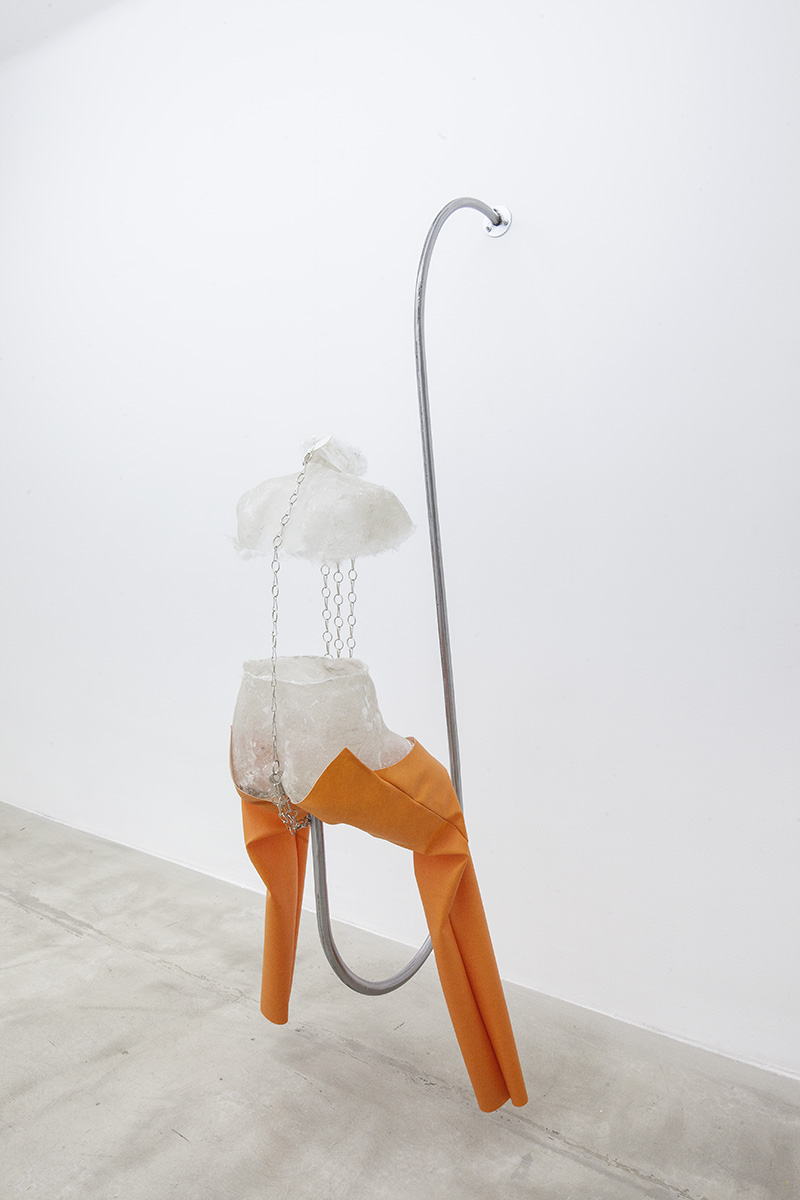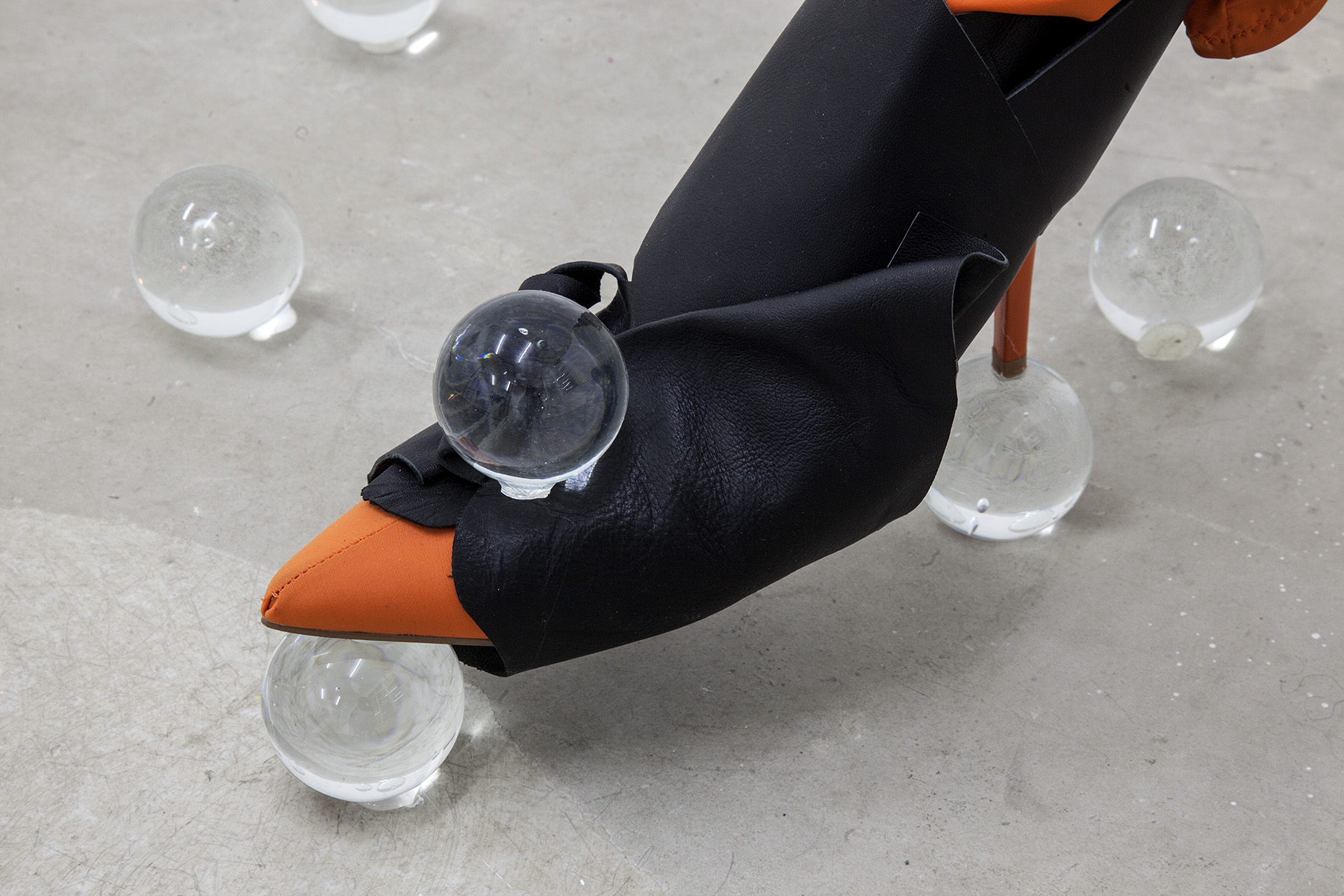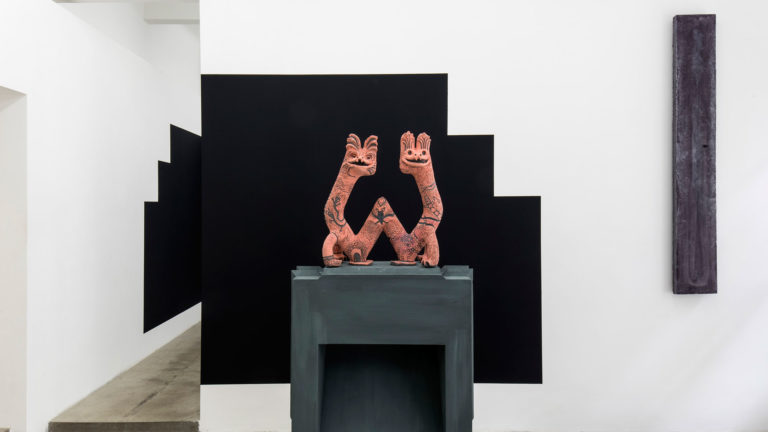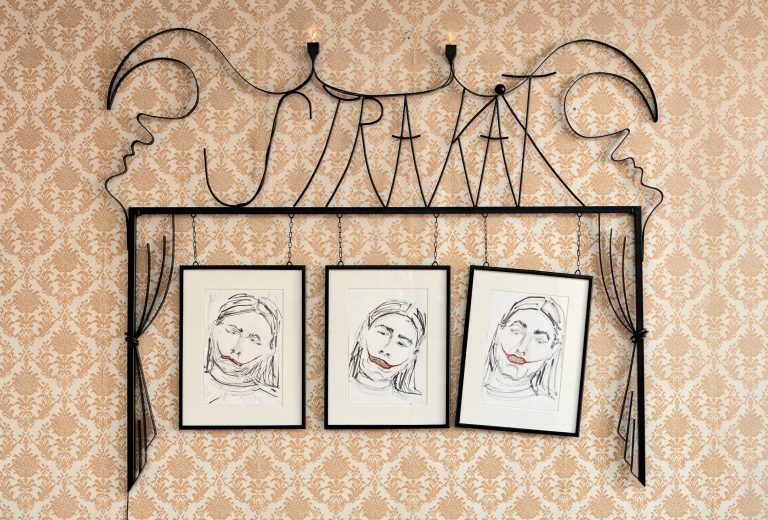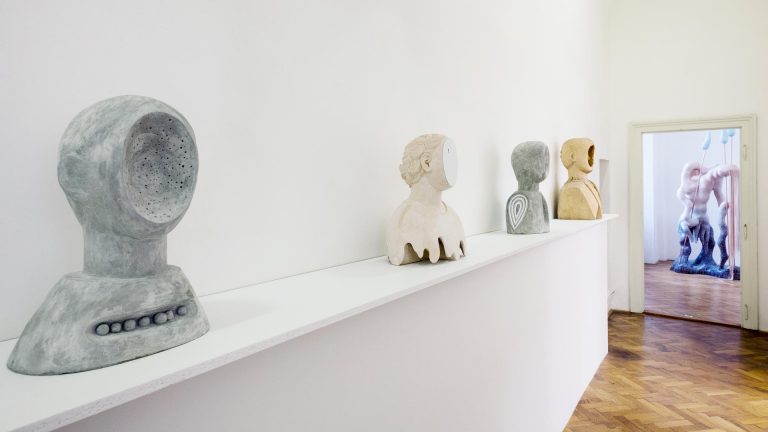Artists: Julie Béna and Romana Drdová
Exhibition title: Horse & Britches
Curated by: Tereza Jindrová
Venue: Drdova Gallery, Prague, The Czech Republic
Date: January 19 – March 2, 2019
Photography: all images copyright and courtesy of the artist and Drdova Gallery, Prague
There is a good feminist and there is a bad feminist.
Good feminism says: sex and sexual expression, especially heteronormative sexual expression, is hurtful to women and puts them in the role of mindless, subordinate sex toys.
Bad feminism says: women having power and space in society means allowing women, all women, to freely choose the types of sex, relationships and sex fantasies that work for them.
Wait!
Or is it the other way around?!
As Linda Williams states, we have to move beyond feminist debates and distinctions between a “good” erotica and a “bad” hard core.
Porn is not simply viewed as a form of entertainment and fantasy but is one of the only windows that we have as a culture to look into what sex looks like, says Madison Young.
Be my horse, wear my britches!
The feminist sex wars, which began percolating in the late 1970s and reached their zenith in the 1980s, refer to collective debates amongst feminists regarding a number of issues broadly relating to sexuality and sexual activity. Differences of opinion on matters of sexuality deeply polarized the feminist movement, particularly leading feminist thinkers of those times, and continue to influence debate amongst feminists to this day.
One of the primary concerns with sexuality was the issue of pornography. Two ideological camps materialized at the time: the anti-censorship feminists (“pro-sex” or “sex-positive”), and anti-pornography feminists. Radical feminists emphasize that pornography illustrates objectification and normalization of sexual violence through presentation of specific acts. In contrast, libertarian feminists are concerned with the stigmatization of sexual minorities and the limited right to practice sexual choice that would be hindered without pornography.
Although critiques of adult entertainment remain (of course rightfully in many cases) a part of feminist thought today, the sex-positive feminist side arguably “won” the war, which paved the way for more complex and challenging representations of female sexuality in art and beyond.
The exhibition Horse & Britches does not speak explicitly about pornography but is highly sensual, erotic, expressive towards (female) sexuality and with no doubts sex-positive while remaining critical. It turns attention towards such categories as sexiness, objecthood or authenticity, which is especially significant.
According to (among others) Madison Young (who’s also starring in Julie Béna’s film), authenticity is one of the primary tools for reforming, or at least enriching the field of pornography where everything tends to be fake and exaggerated. Specific modes of authenticity can represent a quality in which feminist pornography and feminist art can overlap, or what they can have in common. On a personal level (which is, in this sense, necessarily political), authenticity is connected with identity, identity with sexuality and sexuality with libido. There is a strong sense of authenticity in presenting yourself as yourself – embodied and sexual, imprinting (literally or in a figurative sense) into your (artistic) work. And remember: the goal here is not sublimation but emancipation.
Tereza Jindrová
curator
References:
Prior, E., What is sex-positive feminist pornography?, Journal of Positive Sexuality, Vol. 2, 2016, 16-20.
Sollee, K., Sex-Positive Feminist Artists to Know, Bustle, Feb.17, 2016.
Young, M., Authenticity and its role within feminist pornography, Porn Studies, Vol.1, 2014, 186-188.
Wikipedia
Williams, L. (ed.), Porn Studies, Duke University Press Books, 2004.

